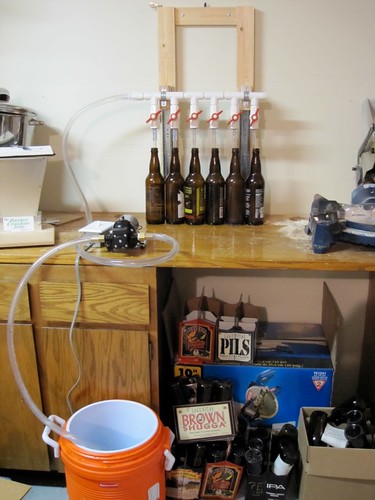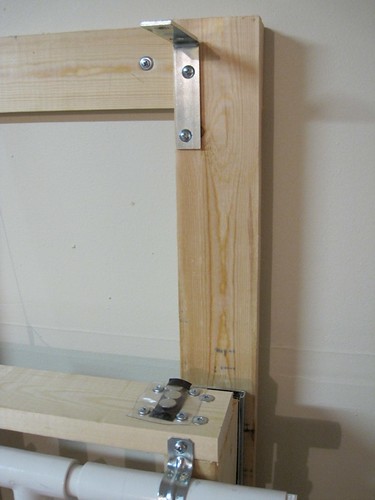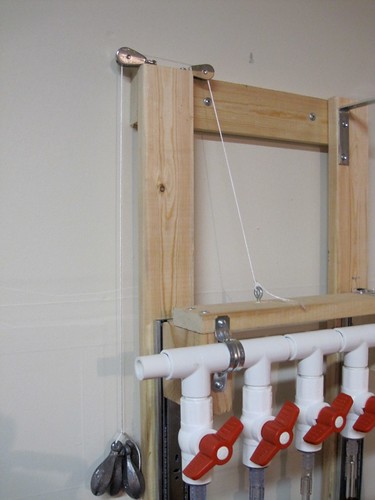Okay, so now I have the rack working the way I want it. It's braced so it doesn't wobble all over the place, there's a counterweight to make it lighter, and I used some super strong magnets to hold it at the top while I switch out the bottles. Here's a video, featuring my husband's lovely arm:
I'll need to figure out how to stabilize the fill tubes, right now some of them move around a little too much. Otherwise it's working great, very easy to use.
Soo..... then there's the pump. Adding a valve before the manifold didn't seem to make a difference. Moving the pump down and the bucket up did help. There aren't any more obvious bubbles. However, if I look really close, there does seam to be a steady stream of really tiny bubbles, almost like champagne bubbles, flowing along the line to the manifold. Hmmmmmm. I'm very nervous about running my actual beer through there, it seems like a sure fire way to oxidize it, doesn't it? I'm open to any more suggestions y'all might have on how to get rid of them.
Now, I happen to have about 4 gallons of beer that's been sitting in a carboy in the kitchen for waaaaaay too long. It was a demo brew at a local beer festival, and I'm very suspicious of the water quality, etc. that we had that day. I'm not expecting this to turn out well, though it doesn't appear to be infected. I'm thinking I'll use it as a test batch for this bottling system. If I run it through this bottler, and it doesn't taste like wet cardboard in 2 weeks, then maybe I can call it a success, eh?

In the meantime, though, I have another 6 gallons of Yuri's pumpkin ale that need to be bottled, and I sure would like to use this system. Hmmmm.









